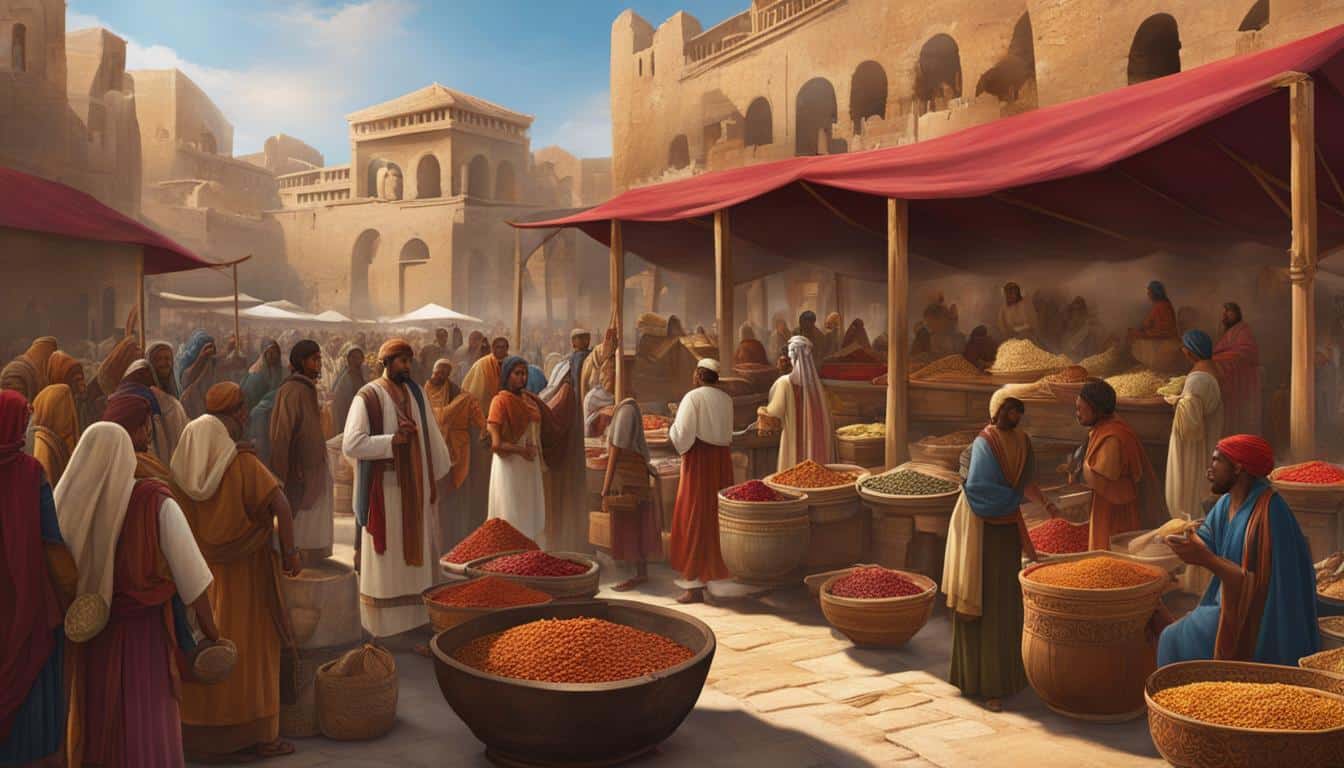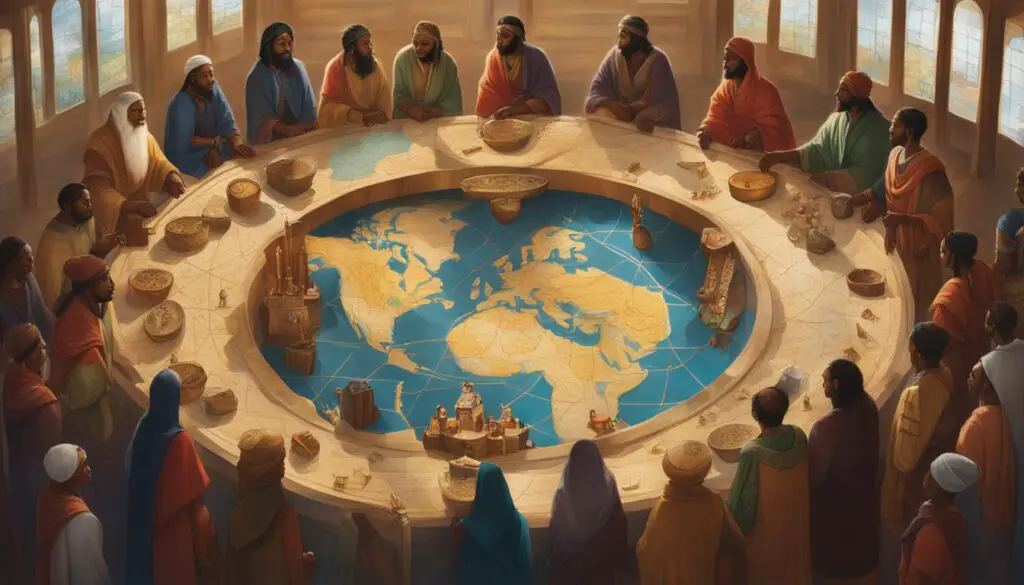
Early Christian communities were deeply rooted in their cultural background, which played a significant role in shaping their traditions, customs, and social practices. Understanding the origins of early Christian culture and the cultural influences on early Christianity is essential for comprehending the rich tapestry of this historical movement.
Christianity initially emerged as a Jewish movement, with Jesus and his followers being Jews themselves. However, as the disciples spread the message of Jesus, the Christian community expanded to include Gentile converts. This cultural expansion led to a transformation from a solely Jewish tradition to a more diverse and culturally-influenced movement.
The early Christian communities were deeply influenced by the cultures and philosophies of the Greco-Roman world in which they existed. They had to navigate various cultural dynamics, blending elements of their surrounding cultures with their religious beliefs. These dynamics ultimately shaped the cultural background of early Christian communities, giving rise to a unique fusion of traditions and customs.
Key Takeaways:
- The cultural background of early Christian communities played a significant role in shaping their traditions and customs.
- Early Christianity began as a Jewish movement but expanded to include Gentile converts.
- The early Christian communities were influenced by the cultures and philosophies of the Greco-Roman world.
- They had to navigate various cultural dynamics to develop their own social practices and religious beliefs.
- The cultural background of early Christian communities was a blend of Jewish, Greco-Roman, and unique Christian influences.
Development and Spread of Early Christianity
The historical context of early Christian culture played a significant role in shaping its development and spread. As the disciples of Jesus, such as St. Paul, St. Peter, and St. John, embarked on missionary campaigns, they encountered different cultural dynamics within the communities they visited. These early Christian communities had to navigate the socio-religious aspects of their new faith while adapting to the cultural context of the regions in which they found themselves.
One of the primary challenges faced by early Christian communities was living among a predominantly pagan society. They had to find ways to integrate their religious beliefs and practices with those of the surrounding cultures. This resulted in a cultural development of Christian communities that blended elements of their own traditions with the teachings of Jesus.
“We are in the world but not of the world.” – St. John
Despite facing opposition and persecution from the Roman Empire, early Christianity continued to grow and establish churches across various regions. As the movement spread, diverse Christian communities emerged, each with its own unique cultural dynamics. These communities allowed for different interpretations of Jesus’ teachings and the significance of his life and death, leading to a rich variety of early Christian beliefs and practices.
| Region | # of Churches | Main Cultural Influences |
|---|---|---|
| Asia Minor | 30+ | Greek and Roman |
| Gaul | 20+ | Celtic and Gallic |
| North Africa | 15+ | Punic and Berber |
| Rome | Multiple | Roman |
Despite the diversity within early Christian communities, efforts were made over time to establish greater unity and consensus on matters of belief and practice. This eventually led to the development of orthodox Christian traditions and the formation of the early Church.
The Spread of Early Christianity – Key Points:
- Early Christian communities had to adapt to the cultural context of the regions they visited while staying true to their religious beliefs.
- Despite opposition from the Roman Empire, early Christianity continued to grow and establish churches in various regions.
- Diverse Christian communities emerged, each with its own unique cultural dynamics and interpretations of Jesus’ teachings.
- Efforts were made to establish greater unity and consensus on matters of belief and practice, leading to the development of orthodox Christian traditions.

Diversity within Early Christian Communities
The early Christian movement was a dynamic and diverse tapestry of beliefs and practices. Within these communities, a variety of Christian traditions emerged, reflecting the unique perspectives and interpretations of Jesus’ teachings. One of the remarkable aspects of early Christianity was the range of views on Jesus himself, which shaped the development of these different traditions.
Some early Christian groups emphasized the importance of Jewish laws and traditions, seeing Jesus as the fulfillment of Jewish prophecies. These communities sought to maintain a strong connection to their Jewish roots while incorporating Gentile converts into their fold. Others took a more inclusive approach, embracing Gentile believers without imposing the strict observance of Jewish laws.
The diverse views of Jesus in early Christianity also influenced the development of theological understandings. Some saw Jesus as a divine figure, the Son of God who came to Earth to save humanity. Others viewed him primarily as a teacher and a source of wisdom, emphasizing his moral teachings and ethical principles. These differing perspectives can be seen in the New Testament itself, with various letters and accounts reflecting the diversity of beliefs present within the early Christian communities.
While efforts were made over time to establish greater unity and consensus on matters of belief and practice, the early period of Christianity was characterized by a rich variety of traditions and interpretations. This diversity laid the foundation for the vibrant and multifaceted nature of Christianity as it continued to evolve and spread throughout the world.
FAQ
What is the cultural background of early Christian communities?
Early Christian communities were influenced by the cultures and philosophies of the Greco-Roman world, which shaped their social practices and religious beliefs.
How did early Christianity develop and spread?
Early Christianity grew rapidly through missionary campaigns led by figures like St. Paul the Apostle. It faced challenges living among a predominantly pagan society but established churches in various regions.
What was the diversity within early Christian communities?
Different groups emerged with various interpretations of Jesus’ teachings and the significance of his life and death. Some emphasized adherence to Jewish laws, while others sought to incorporate Gentile converts without imposing the burdens of the Torah.








